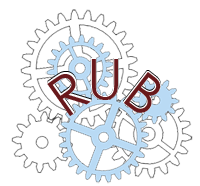Proszę używać tego identyfikatora do cytowań lub wstaw link do tej pozycji:
http://hdl.handle.net/11320/18425Pełny rekord metadanych
| Pole DC | Wartość | Język |
|---|---|---|
| dc.contributor.author | Konopczyński, Marek | - |
| dc.contributor.author | Konopczyński, Filip | - |
| dc.date.accessioned | 2025-08-07T09:48:09Z | - |
| dc.date.available | 2025-08-07T09:48:09Z | - |
| dc.date.issued | 2011 | - |
| dc.identifier.citation | Resocjalizacja Polska Nr 2, 2011, s. 347-358 | pl |
| dc.identifier.issn | 2081-3767 | - |
| dc.identifier.uri | http://hdl.handle.net/11320/18425 | - |
| dc.description.abstract | Artykuł poświęcony jest analizie współczesnych problemów psychologicznych i społecznych związanych z funkcjonowaniem second lifu w Internecie. Autorzy stawiają tezę, że współczesna rzeczywistość realna i wirtualna nawzajem się mieszają, co wywołuje określone skutki psychologiczne i społeczne. Artykuł poświęcony jest poszukiwaniom odpowiedzi, na ile aktywność młodzieży w grach, zabawach i kontaktach internetowych ma wpływ na kształtowanie się wirtualnej i realnej tożsamości. Postawione pytania zmierzają w kierunku określenia, czy jest możliwe równoległe funkcjonowanie dwóch tożsamości ludzkich: realnej i wirtualnej. | pl |
| dc.description.abstract | The article is focused on the analyses of the modern psychological and social problems related to functioning of the “Second-Life” in the internet. The author forms a thesis that modern real and virtual reality mix together, resulting in particular psychological and social outcomes. The article aims at finding the answer to the question to what extent the activity of the youth in internet games, activities and contacts has an influence on forming the virtual and real identity. The questions asked are to find the answer if it is possible for two human identities, the real and virtual, to function in parallel. | en |
| dc.language.iso | pl | pl |
| dc.publisher | Pedagogium Wyższa Szkoła Nauk Społecznych w Warszawie | pl |
| dc.rights | https://creativecommons.org/licenses/by/4.0/ | - |
| dc.rights.uri | https://creativecommons.org/licenses/by/4.0/ | - |
| dc.title | Tożsamość w sieci. Perspektywa socjopedagogiczna | pl |
| dc.title.alternative | Identity in the network. Socio-pedagogy perspective | pl |
| dc.type | Article | pl |
| dc.rights.holder | Licencja Creative Commons Uznanie autorstwa 4.0 (CC-BY) | pl |
| dc.description.Affiliation | Marek Konopczyński - Pedagogium Wyższa Szkoła Nauk Społecznych w Warszawie | pl |
| dc.description.Affiliation | Filip Konopczyński - Uniwersytet Warszawski | pl |
| dc.description.references | Anderson, B. (1983) Imagined Communities: Reflections on the Origin and Spread of Nationalism. London: Verso. | pl |
| dc.description.references | Aronson E. (1992) Człowiek - istota społeczna. Warszawa: WN PWN. | pl |
| dc.description.references | Aronson E. Wilson T.D. Akert R.M. (1997) Psychologia społeczna. Serce i umysł. Poznań: Zysk i S-ka. | pl |
| dc.description.references | Baumeister R.F. (red.) (1986) Public self and private self. New York: Springer-Verlag. | pl |
| dc.description.references | Brown J.D. (1998) The self. New York: McGaw-Hill. | pl |
| dc.description.references | Campbell D.T. (1990) Blind variation and selective retention in creative thought as in other knowledge process. Psychological Review no. 67. | pl |
| dc.description.references | Campbell J. (1990) Self-esteen and clarity of the self-concept. Journal of Personality and Social Psychology no. 59. | pl |
| dc.description.references | Castells M. (2004) Informationalism, Networks and the network society: a theoretical blueprint. Northampton. | pl |
| dc.description.references | Cialdini R.B. (2004) Wywieranie wpływu na łudzi. Teoria i praktyka. Gdańsk: GWP. | pl |
| dc.description.references | Festinger L. (1957) A theory of Cognitive Dissonance. Stanford: University Press. | pl |
| dc.description.references | Fukuyama F. (2004) Koniec człowieka. Kraków: Wyd. Znak. | pl |
| dc.description.references | Giddens A. (2001) Nowoczesność i tożsamość „Ja” i społeczeństwo w epoce późnej nowoczesności. Warszawa: WN PWN. | pl |
| dc.description.references | Giddens A. (2006) Socjologia. Warszawa: WN PWN. | pl |
| dc.description.references | Goffman E. (2005) Piętno. Rozważania o zranionej tożsamości. Gdańsk. | pl |
| dc.description.references | Hall, S. (1996) ‘Who Needs Identity?’ In S. Hall and P. du Gay (red.) Questions of Cultural Identity, s. 1-17. London. | pl |
| dc.description.references | Jones E.E. (1990) Interpersonal perception. New York: Freeman. | pl |
| dc.description.references | Konopczyński M. (1996) Twórcza resocjalizacja. Editions Spotkania. | pl |
| dc.description.references | Konopczyński M (2006) Metody twórczej resocjalizacji. Warszawa: WN PWN. | pl |
| dc.description.references | Kowalski R.M., Leary M.R. (1990) Strategie self-presentation and The avoidance of aversive erents. Antecedents and consequences of self-euhancement and self depreciation. Journal of Experimental Social Psychology, no. 26. | pl |
| dc.description.references | McKenna Y.A., Bargh J.A. a Plan 9 From Cyberspace: The Implications of the Internet for Personality and Social Psychology Katelyn. | pl |
| dc.description.references | Melchior M. (1990) Społeczna tożsamość jednostki. Warszawa: Uniwersytet Warszawski. Wydział Profilaktyki, Resocjalizacji i Problemów Społecznych. | pl |
| dc.description.references | Melosik Z. (1996) Tożsamość, ciało, władza. Poznań-Toruń: „Edytor”. | pl |
| dc.description.references | Mead G.H. (1975) Umysł - osobowość - społeczeństwo. Warszawa: PWN. | pl |
| dc.description.references | Siemieniecki B. (red.) (2008) Pedagogika medialna, t. 2. Warszawa: WN PWN. | pl |
| dc.description.references | Szczukiewicz P. (1998) Rozwój psychosomatyczny a tożsamość. Lublin. | pl |
| dc.description.references | Szmajke A. (1999) Autoprezentacja - maski, pozy, miny. Olsztyn: Wyd. Ursa. | pl |
| dc.description.references | Tesser A., Felson R.B., Suls J.M. (2004) Ja i tożsamość. Tłum. A. Karolczak. Gdańsk. | pl |
| dc.description.references | Wellman B, Gulia M. (1997) Virtual Communities as communities. Toronto. | pl |
| dc.description.number | 2 | pl |
| dc.description.firstpage | 347 | pl |
| dc.description.lastpage | 358 | pl |
| dc.identifier.citation2 | Resocjalizacja Polska | pl |
| Występuje w kolekcji(ach): | Artykuły naukowe (WNoE) Resocjalizacja Polska, 2011, nr 2 | |
Pliki w tej pozycji:
| Plik | Opis | Rozmiar | Format | |
|---|---|---|---|---|
| RP_2_2011_M_Konopczynski_F_Konopczynski_Tozsamosc_w_sieci.pdf | 371,45 kB | Adobe PDF | Otwórz |
Pozycja ta dostępna jest na podstawie licencji Licencja Creative Commons CCL


